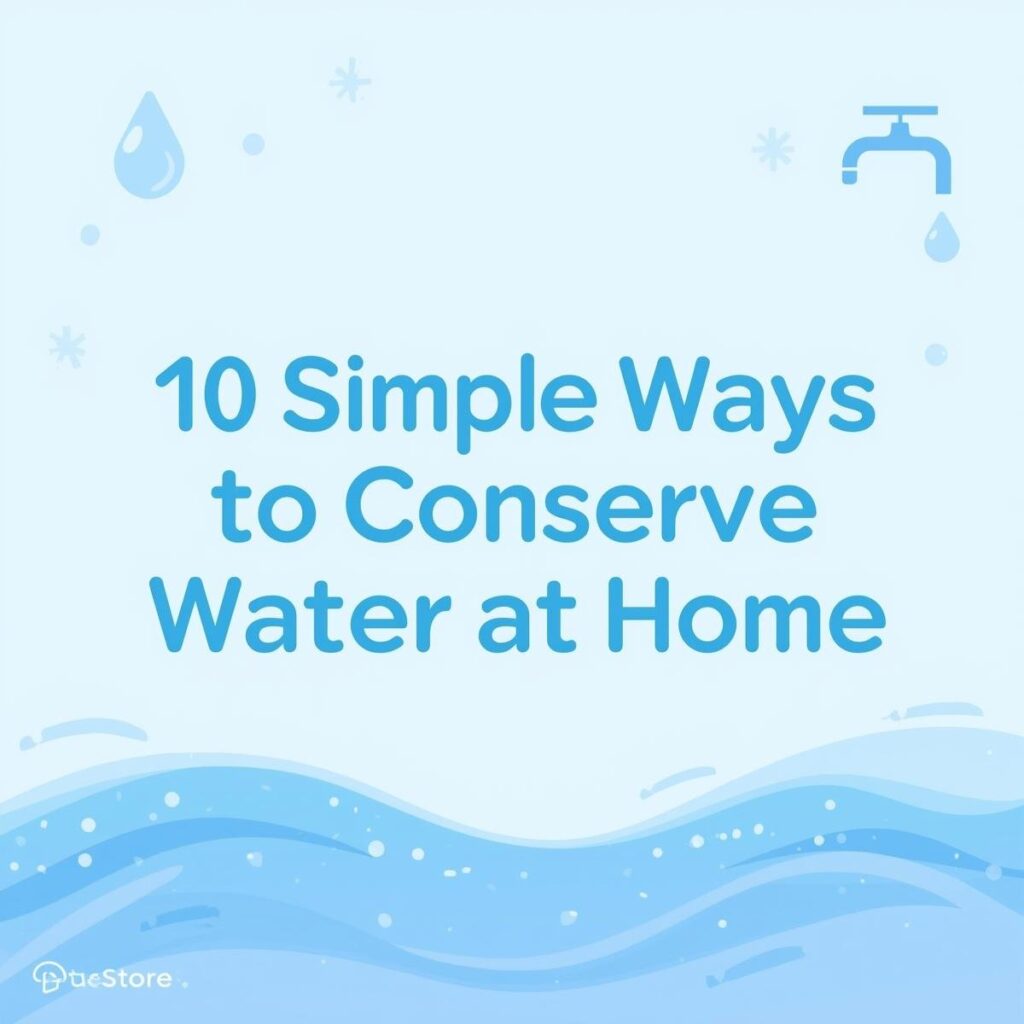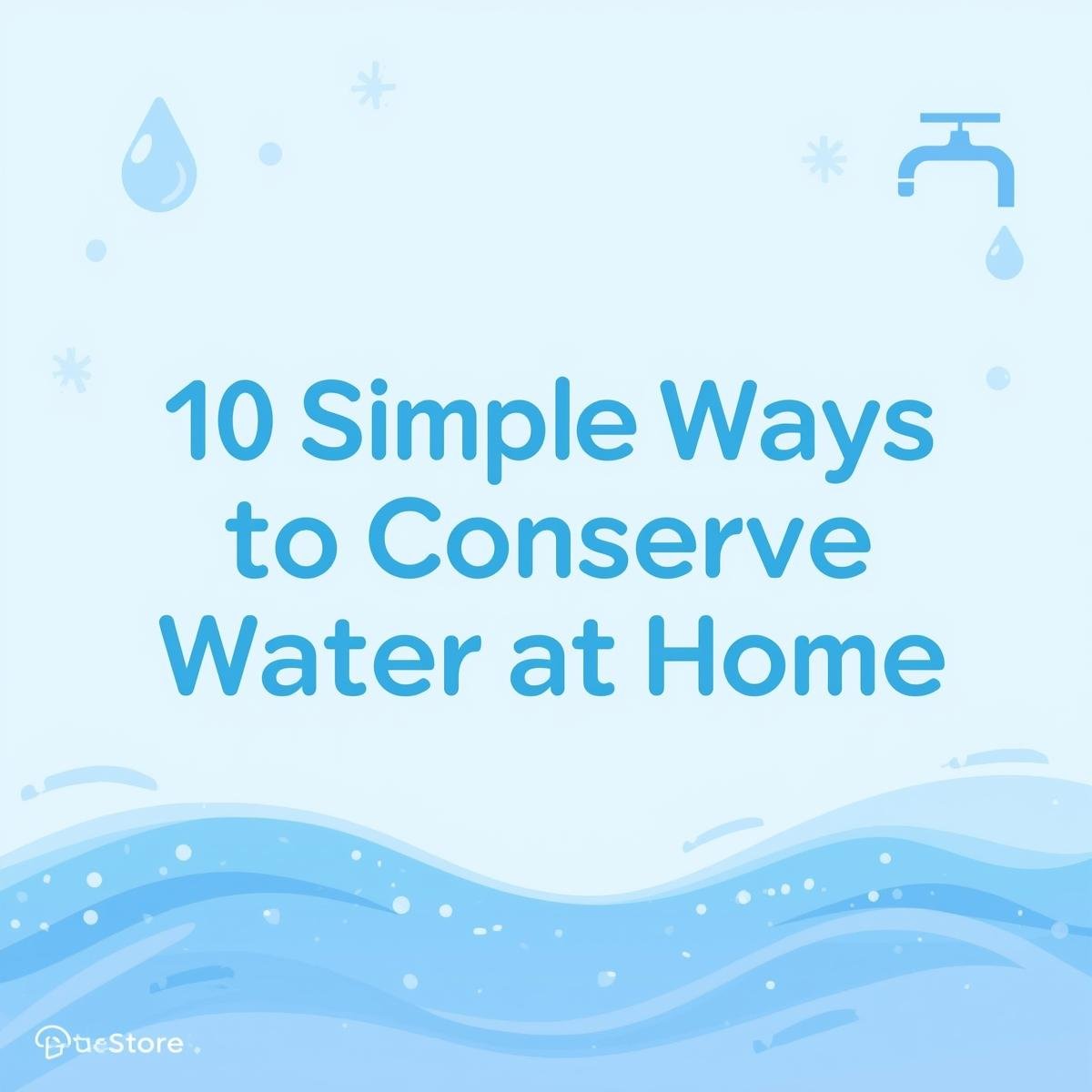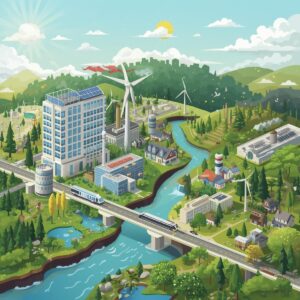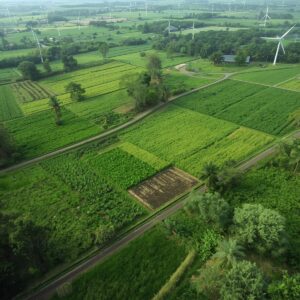Water is life. We use it every day for drinking, cooking, cleaning, bathing, gardening, and more. Yet, despite its essential role, freshwater is a limited resource. With growing populations, climate change, and increasing demand, water scarcity is becoming a global challenge.
The good news? You don’t have to overhaul your life or spend big to make a difference. There are many simple, everyday actions you can take at home to conserve water, lower your bills, and help safeguard this precious resource.
Whether you live in a rural home or an apartment in Nairobi, this step-by-step guide will walk you through practical, affordable ways to save water, starting today. Find more sustainability posts here.
Table of Contents
Why Water Conservation Matters (Now More Than Ever)
According to the United Nations, 2 billion people lack access to safely managed drinking water services globally [UN-Water, 2023].
Closer to home in Kenya, water scarcity is a growing concern. Prolonged droughts, deforestation, and overuse are affecting rivers, dams, and boreholes across the country. Urban areas like Nairobi also experience intermittent water supply, especially in dry seasons.
Saving water isn’t just about sustainability, it’s also:
- A climate adaptation strategy
- A cost-cutting move (lower water and energy bills)
- A responsibility to future generations

Step-by-Step Tips to Save Water at Home
Whether you’re just starting your sustainability journey or looking for new ideas, these tips cover kitchen, bathroom, laundry, outdoors, and everyday habits.
1. Fix Leaks Immediately
Leaky taps and toilets are silent water wasters. A single dripping faucet can waste up to 3,000 liters per year [EPA, 2022].
Action tip: Check all faucets, showerheads, and toilets monthly. If you hear trickling water in your toilet tank or see puddles under taps, it’s time for a fix.
2. Turn Off the Tap
Running the tap while brushing teeth or doing dishes is one of the most common water-wasting habits.
✅ Action tip:
- Turn off the tap while brushing or shaving.
- Rinse fruits and veggies in a basin instead of under running water.
- Wash dishes in a sinkful of soapy water and rinse them together.
These habits alone can save thousands of liters a year.
3. Install Water-Saving Fixtures
Upgrading to water efficient fixtures is one of the best long term investments for your home.
🔧 Consider installing:
- Low-flow showerheads (cut water use by 30–50%)
- Dual flush toilets
- Tap aerators that mix air with water to reduce flow
Bonus: In many places, these are affordable and easy to install without a plumber.
4. Use Your Washing Machine & Dishwasher Efficiently
Large appliances use a lot of water but used smartly, they can help you conserve.
Smart laundry tips:
- Only wash full loads.
- Choose the “eco” setting if available.
- Skip the extra rinse cycles unless necessary.
Dishwasher tips:
- Scrape dishes instead of rinsing them before loading.
- Again, run only full loads.
A modern dishwasher can use less water than handwashing but only when used efficiently.
5. Recycle Greywater (Safely)
Greywater is the relatively clean water from your sinks, showers, and laundry.
In many homes especially in water-scarce areas, greywater recycling is a powerful way to reduce waste.
How to reuse greywater at home:
- Use water from rinsing veggies to water plants.
- Direct laundry water to outdoor flower beds (use eco-friendly detergent).
- Collect shower warm-up water in a bucket for flushing toilets or cleaning floors.
Always avoid using greywater on edible crops unless it’s treated or safe.
6. Harvest Rainwater
Rainwater harvesting is an age-old solution that’s still incredibly effective. It’s free, abundant (during rainy seasons), and perfect for outdoor use.
Rainwater uses:
- Watering gardens or livestock
- Washing cars
- Cleaning floors and surfaces
- Flushing toilets
In Kenya, many counties promote rainwater harvesting in homes and schools. Simple gutters, tanks, and filters can make a big difference, especially in rural and semi-arid areas.
7. Water Plants Wisely
Gardening can be water intensive, especially in sunny or dry climates.
Water saving gardening tips:
- Water early in the morning or late evening to reduce evaporation.
- Use mulch (leaves, straw, bark) to keep soil moist.
- Choose native or drought-tolerant plants.
- Install drip irrigation or use watering cans instead of hoses.
Every drop counts, and your plants will thrive with less water than you think.
8. Reuse Where You Can
Water used once doesn’t always have to go down the drain.
Everyday reuse ideas:
- Use leftover cooking water (from pasta or rice) for watering plants (once cooled).
- Reuse water from washing veggies or grains.
- Store unused drinking water from glasses or bottles to use later.
These small actions, multiplied across millions of homes, can conserve massive amounts of water.
9. Teach and Involve Everyone in the Household
Water conservation works best when everyone is on board, even children.
Tips to get the family involved:
- Create a “water-saving challenge” at home.
- Track your water bills and celebrate monthly reductions.
- Educate kids about turning off taps and using water wisely.
Conservation habits stick better when they’re modeled and celebrated.
10. Know Your Water Bill & Monitor Use
Your water bill is more than just a number, it’s a tool.
How to use it:
- Track changes in monthly water use.
- Identify unusual spikes (could be leaks or new habits).
- Set household goals for reducing water consumption.
Some utilities even offer rebates for water-saving devices or free leak inspections, check with your local provider.
Extra Tip: Adopt a Water-Conscious Mindset. Sometimes, conservation isn’t just about the physical steps , it’s about changing how we think.
Start asking:
- Do I really need to run this tap longer?
- Can I reuse this water before tossing it out?
- Is there a better way to do this with less water?
When conservation becomes second nature, you’ll be surprised how much you can save without sacrificing comfort or cleanliness.
Conclusion: Every Drop Counts
Water conservation at home isn’t about sacrifice, it’s about efficiency, mindfulness, and care. It’s about respecting a resource that sustains life and doing our part to protect it for future generations.
And the best part? Many of these changes are free, easy, and instant. So whether you’re in a small apartment or a family compound, there’s something you can do to conserve water starting today.
Let’s build a future where water is safe, accessible, and available for everyone, one home at a time.
References
- UN-Water. (2023). Water Facts. https://www.unwater.org/water-facts
- United Nations Environment Programme (UNEP). Water Resources Management.
- U.S. Environmental Protection Agency (EPA). WaterSense Program. https://www.epa.gov/watersense
- World Bank. (2021). Water Scarcity: Addressing the Challenges.
- Kenya Ministry of Water, Sanitation and Irrigation. National Water Strategy.



